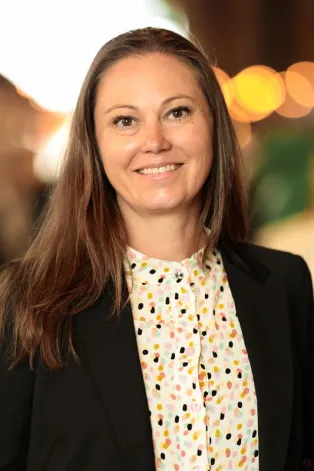The past two weeks have been hectic for PhD student Anna Stubbendorff. She normally conducts research on sustainable nutrition and health at Lund University's Department of Medicine. Lately, she has been asked a lot about a new study in which she and her colleagues interviewed 475 upper secondary school students in Lund and Malmö about their eating habits and menstrual patterns, and then supplemented the results with tests of their body iron levels.
The background to the study is that this group menstruates and loses blood every month, so the researchers wanted to see if they were getting enough iron from their diet.
And it turned out that what was on their plates made a big difference. A total of 38 per cent of all the students in the study were iron deficient, an average of almost four in ten young women. Among vegetarians and vegans, the proportion was even higher -– nearly 70 per cent of those who didn't eat meat were iron deficient, compared to 30 per cent of meat-eaters.
"It was an unexpectedly high number of people with iron deficiency. Iron absorption is affected by both what we eat and how we eat it, as certain foods affect the body's ability to absorb iron," says Anna Stubbendorff.
Lifestyle plays a role
She adds that lifestyle also plays a role - it may be more common to skip meals and have an energy drink or smoothie instead, which does not provide iron.
"Dietary habits may have worsened, with some leaving out the meat from a meal - for example, just eating the pasta - without replacing it with another iron-rich food," says Anna Stubbendorff. "In some cases, support from others may be needed".
Although iron deficiency was more than twice as common in vegetarians and vegans than in the rest of the group, Anna Stubbendorff is not advocating that all young women should eat meat. She stresses that it is perfectly possible to get enough iron as a vegetarian, and that a plant-based diet has other health, sustainability and climate benefits.
"It doesn't have to be an either/or situation. I think that in the future, diets where people eat more plant-based foods, with small amounts of meat every now and then, will become more common."
More testing by school health services
For those with low iron stores, iron-rich foods may need to be supplemented with iron tablets to reach healthy levels more quickly. Iron deficiency can cause symptoms such as fatigue, paleness, breathlessness and difficulty concentrating. Anna Stubbendorff would like to see more testing offered by school health services, and for those with heavy menstrual bleeding, there are also medical treatments to reduce the flow.
For more tips on how to boost your iron levels, see the fact box alongside this article.
Anna Stubbendorff has published several research articles, including in The Lancet Planetary Health. But none has generated as many interview requests as this one.
"That's probably because it affects so many people - and they are suffering unnecessarily from iron deficiency. I hope this attention can help change that."
Link to the study Iron insight: exploring dietary patterns and iron deficiency among teenage girls in Sweden – springer.com
Anna Stubbendorff's personal page
Link to some of the interviews in media (in Swedish):

